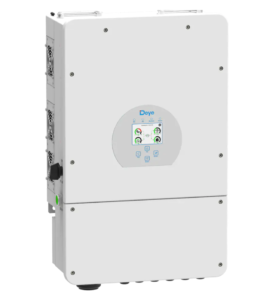🌞 Solar Installation Training (Full Lecture Notes)
Goal: To teach anyone how solar power works and how to install a basic solar system from start to finish.
Module 1: Introduction to Solar Energy
✅ What is Solar Energy?
- Solar energy is light and heat from the sun.
- We use solar panels to capture this energy and turn it into electricity we can use at home or work.
✅ Why Use Solar Energy?
- It’s free (sunlight costs nothing).
- It’s clean (no smoke or pollution).
- It’s renewable (the sun will shine every day).
✅ Types of Solar Systems
- Solar PV (Photovoltaic) – Makes electricity from sunlight.
- Solar Thermal – Heats water using sunlight.
- Concentrated Solar Power (CSP) – Uses mirrors to focus sunlight (for big power plants, not homes).
🧠 Example: Think of a solar panel like a big leaf – it collects sunlight and turns it into something useful.
Module 2: Solar System Components
✅ What Makes Up a Solar System?
- Solar Panels – These sit on your roof and collect sunlight. They produce DC (Direct Current) electricity.
- Inverter – Changes DC electricity to AC (Alternating Current) – which is what we use in homes.
- Mounting Structure – A strong frame to hold the panels in place.
- Battery – Stores power for when there’s no sun (used mostly in off-grid systems).
- Charge Controller – Controls the flow of electricity to avoid overcharging the battery.
- Wires and Breakers – Connect everything and keep it safe.
✅ Types of Solar Systems
- Grid-Tied: Works with your electricity provider. If you need more power, you get it from the grid.
- Off-Grid: Not connected to the electricity grid. You must use batteries to store power.
- Hybrid: Connected to both the grid and batteries – best of both worlds.
🧠 Think of it like this: Solar panels are like your water tank – collecting sun. The inverter is like a pump, making that water usable.
Module 3: Planning the System
✅ Step 1: Visit the Site
- Check where the sun shines the most.
- Make sure there’s no shade (trees or tall buildings).
- Check if the roof is strong and has the right angle.
✅ Step 2: How Much Power Do You Need?
- Look at your electricity bill. See how many units (kWh) you use each month.
- If you use 300 kWh/month and get 5 sun-hours/day, you need:
- Around 2 kW system = 2000 watts.
✅ Step 3: System Size
- You can figure out how many panels you need.
- Example: If 1 panel gives 400 watts, and you need 2000 watts:
- You need 5 panels.
🧠 Tip: More sun = fewer panels. Less sun = more panels.
Module 4: Installing the System
✅ Safety First
- Wear gloves, helmet, and safety harness.
- Turn off power when connecting wires.
- Don’t install in the rain or wet conditions.
✅ Step-by-Step Installation
1. Mount the Structure
- Fix the frame to the roof or ground.
- Use proper tools (drill, bolts).
- Make sure it is tilted toward the sun (in most places, face it south).
2. Install the Solar Panels
- Put the panels on the frame.
- Screw them tightly so they don’t fly off in the wind.
3. Connect the Wires
- Connect panels together (series or parallel).
- Run wire to the inverter.
- Connect inverter to battery (if used), and to the house power system.
4. Mount the Inverter
- Keep it near the main power box, indoors or shaded.
- Connect wires carefully – red is + (positive), black is – (negative).
5. Battery Setup (if needed)
- Place batteries in a cool, dry place.
- Connect charge controller between panels and batteries.
🧠 Analogy: Think of it like plumbing. Panels collect “solar water,” the inverter is the filter, and wires are the pipes.
Module 5: Testing and Running the System
✅ How to Test Your System
- Use a multimeter to check voltage and current.
- Make sure inverter is turning on and showing power.
- Turn on some lights to test if electricity flows.
✅ For Grid-Tied Systems
- Call the electric company.
- Set up net metering (so you can sell power back).
✅ Maintenance Tips
- Clean panels with soft cloth and water every few weeks.
- Check connections and wires every few months.
- Watch inverter for error lights.
🧠 Tip: Dust and bird poop can block sunlight. Keep panels clean!
Module 6: Legal and Compliance
✅ Things to Do Before Installing
- Get a permit from your local authority.
- Follow building codes (how the system is built).
- Follow electrical codes (how it’s wired).
✅ After Installation
- Have it inspected.
- Get it approved for use.
- Register for incentives or solar tax benefits if available.
🧠 Final Note: Always work with a certified installer or learn the correct practices before doing big jobs.




